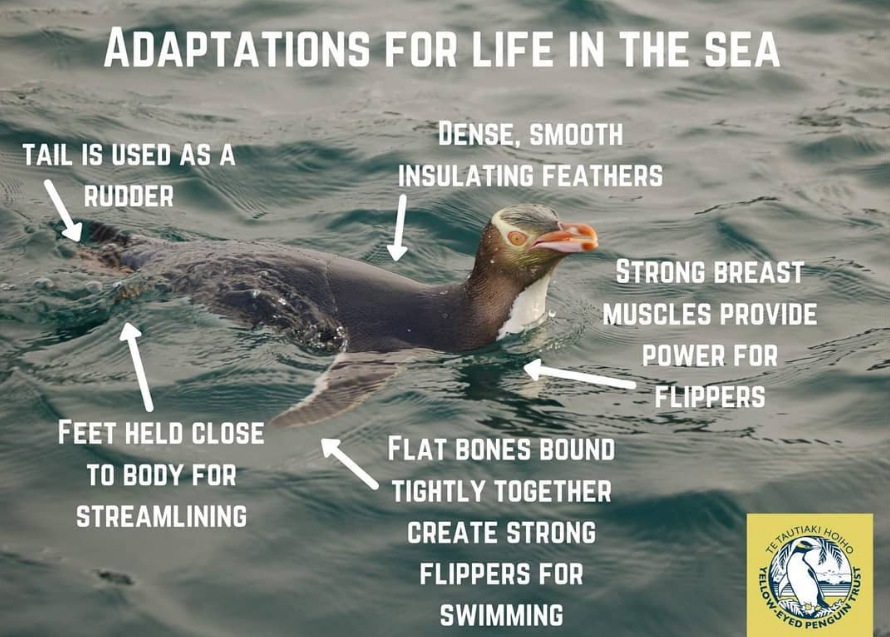Every adult penguin has two shades of skin: white on the ventral (underside) surface and dark on the dorsal (back) surface. From above, the dark dorsal side disappears into the shadowy ocean depths. When viewed from below, the lighter ventral side merges with the sea’s lighter surface. As a result, the countershaded penguin and its surroundings are not noticeable to predators or prey.
Adaptations for life in the sea
An animal can alter itself to become more adapted to its surroundings.
Penguins have an excellent ability to swim, find food and drink, and stay warm in the water.

Thick, substantial bones that function as a diver’s weight belt to keep them underwater
paddle-like flippers The wings are transformed into broad, flattened bones, and the elbow and wrist joints are nearly fused. Penguins can move through the water at up to 20 km/h by flapping their flippers.
Short, wedge-shaped tail that is used as a prop on land or to help climb steep cliffs and over rocks when leaving the shore
Robust limbs with webbed feet The legs are positioned far back on the body to aid in the bird’s steering and streamline during swimming Penguins are also forced to stand vertically and walk upright due to this placement.
Long, thin bill: The powerful bill’s primary function is to catch food, like squid and fish. In addition, they use it to protect their feathers from predators and other birds. Backward-pointing spines line the mouth and tongue to trap the slippery fish until it is swallowed whole.
Unique feathers: Penguins’ numerous feathers act as a waterproof insulating layer, keeping them warm in the water. A layer of air is trapped between the skin and the feathers by the locking together of two layers of short, stiff, and hooked feathers. Underneath the outer feathers is a layer of down. Preening helps keep the feathers clean and well oiled. The bill is used to distribute oil through the feathers from an oil gland located at the tip of the tail.
To stay warm, blubber penguins have a layer of fat beneath their skin.
The salt glands are situated between the eyes, directly above the bill. They de-salt fish and seawater, and the salt is then expelled from the bill.
Remaining cool: Penguins can regulate their body temperature by swishing blood through their toes and flippers. This explains why on warm days, penguins’ feet turn bright pink. When they are really hot they pant!.
Color: The back of every adult penguin is dark, while the underside is white. This is frequently assumed to be for camouflage, with the white side blending with the lighter sea surface from below and the black side blending with the shadowy ocean depths when viewed from above. Other theories have also been put forth, such as social signaling (to attract other penguins) and thermoregulation (the dark side faces upward and absorbs heat from the sun to warm them).
FAQ
What do penguins have in common with other birds?
What bird is closely related to a penguin?
What are the unique features of a penguin?
What is unique about penguins compared to other marine birds?